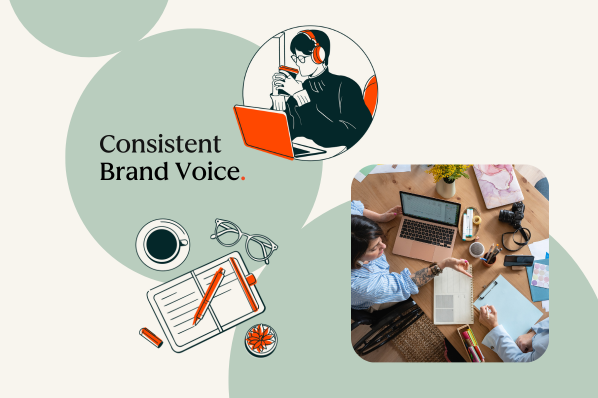By Brittany Lieu, Marketing Consultant at Heinz Marketing
Great messaging and consistent content aren’t just nice to have. They’re how you turn awareness into action and pipeline into revenue. But getting there isn’t easy. Maybe you’re juggling multiple personas, trying to scale without a full team, or figuring out where AI fits in your workflow.
In this blog, we’ve answered the most common questions B2B marketers ask when building content and messaging strategies that actually scale and drive results.

Crafting Messaging That Connects
How do we craft messaging that speaks to multiple buyer personas?
Start with a messaging framework that outlines the high-level story of your brand. This should include both benefit messages (what outcomes you enable) and challenge messages (what pain points you solve).
That shared foundation keeps your message consistent across campaigns and channels. From there, tailor the supporting points to each persona in the buying committee. Decision makers want to understand business impact and strategic value. Champions are focused on functional wins and getting internal alignment. Influencers care about how your solution fits into daily workflows and solves tactical challenges. When your messaging flexes by role but stays anchored in a single, strategic framework, it feels both relevant and cohesive.
How do we test our messaging to ensure it resonates with our audience?
Start small, focused, and measurable. Pick a single channel where you can get fast feedback. LinkedIn is a good option for B2B.
Set up two versions of an ad: same audience, same creative, different headline or value prop. Look beyond just CTRs. Watch for engagement with the landing page and form fills. You’re testing which message earns attention and signals intent. Pair that with a quick check-in with your sales team: ask which version better matches how prospects describe their problems in discovery calls. When qualitative and quantitative feedback line up, you’ve found a winner.
How often should we revisit and update our messaging to stay relevant?
Messaging should be a living asset, not a one-and-done deliverable. While a full refresh may only be necessary once or twice a year, reviewing messaging quarterly ensures it stays aligned to shifting priorities, new competitors, or product changes.
Big internal milestones, like sales kickoffs or product launches, are also ideal moments to refine and reinforce your core story. If you notice increasing objections, longer sales cycles, or inconsistent positioning in market, it’s a sign your messaging may be out of sync with what your buyers need to hear.
Building and Scaling Content Strategy
How do we build a content strategy without a dedicated content team?
Get clear on your goals, then build lean. Start by defining the few content formats that support your funnel. Maybe that’s one SEO blog, one sales enablement asset, and one webinar per quarter. Repurpose everything. A single webinar can fuel a month of posts, a blog, and sales follow-up content. When possible, pull insights from internal SMEs by interviewing them, then turning their input into first drafts. Treat content as a product: prioritize, reuse often, and scale what’s working.
Which metrics matter most for B2B content?
It depends on what the content is meant to do. For top-of-funnel pieces, focus on engagement, think traffic, time on page, and bounce rate. For mid- to bottom-funnel, look at conversion metrics and how often the content shows up in successful deals. But the real test is whether content is helping move pipeline. If a case study is closing deals or a blog post consistently drives demo requests, that’s worth more than any vanity metric.
How do we scale content without losing quality?
Quality scales when your process does. Start by creating clear briefs, define what “good” looks like, and make sure there’s a consistent review loop. Avoid reinventing the wheel. Use templates, repeatable structures, and shared messaging frameworks to create consistency. Instead of producing 100 one-off assets, focus on a core few that you can atomize and distribute across formats and channels. Quality isn’t about volume. It’s about consistency, clarity, and usefulness.
How can we use AI in content without hurting quality?
Use AI to speed up the parts of content creation that slow you down without outsourcing your thinking. Start by training AI on your messaging framework, tone guidelines, and best-performing content examples. Use it to generate outlines, repurpose long-form assets into short-form copy, or draft variations for social posts and headlines. When you prompt AI, be specific: include your audience, goal, format, and brand voice. Think of AI as your first-pass writer, not your final editor. With the right setup, you can scale faster and stay sharp.
Final Thoughts
Strong messaging and smart content aren’t just about writing. They’re about consistency, clarity, and making every piece count.
If you’re looking to strengthen marketing foundations like your messaging, content strategy, or go-to-market approach, we’d love to help. Let’s connect .
The post Frequently Asked Questions About Content and Messaging in B2B Marketing appeared first on Heinz Marketing.


